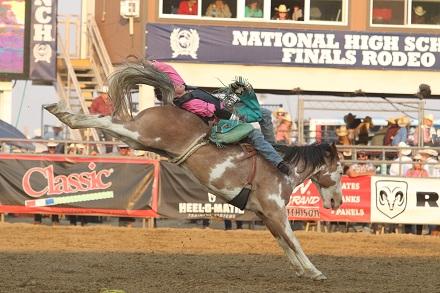
The National High School Rodeo Association is an international, non-profit organization dedicated to the development of sportsmanship, horsemanship and character in the youth of our country through the sport of rodeoThe NHSRA membership consists of over 10,500 members from all 50 states, as well as Canada and Australia. It is headquartered in Denver, Colorado and includes programs for both high school and junior high students.
Sports Destination Management: NHSRA is incredibly active.
Austin White: Yes, we officially have members in all 50 states, and we sanction just over 1,80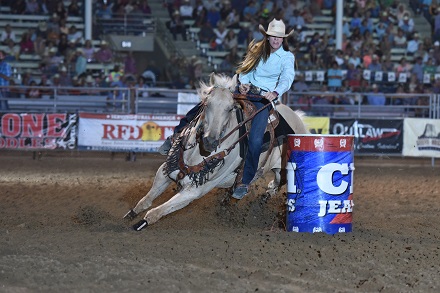 0 rodeos in the U.S., Canada and Australia.
0 rodeos in the U.S., Canada and Australia.
SDM: All 50 states – does that include Hawai’i?
White: It does. In fact, Hawai’i is the fourth-largest producer of cattle in the United States. Rodeo is absolutely huge in Hawai’i.
SDM: It seems like rodeo is absolutely huge everywhere. You sanction 1,800 rodeos a year; how many national events does the organization put on?
White: As a national office, we produce the two elite youth rodeo events in the world – The National Junior High Finals Rodeo (NJHFR) and the National High School Finals Rodeo (NHSFR). The High School Finals will have a $12 million economic impact and the Junior High School Finals will have a $10 million economic impact.
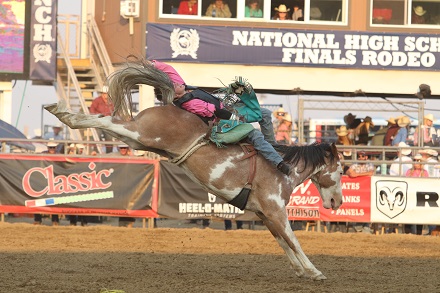 SDM: That is significant by anyone’s definition. What kind of participation numbers does each event have?
SDM: That is significant by anyone’s definition. What kind of participation numbers does each event have?
White: The junior high event brings in about 1,100 contestants and 1,300 contestant horses, and the high school event has 1,650 contestants and 2,000 contestant horses. Both finals have trade shows; the high school event has an 80,000-square-foot trade show while the junior high has about 40,000 square feet.
If you’re talking about where everyone stays, a lot of people travel in horse trailers with living quarters or they bring RVs, so there is a lot of camping: 800 to 900 campers for the junior high, 1,300 to 1,400 campers for the high school. There is also some hotel use; the junior high group uses 3,000 room nights over 10 days, and the high school group uses 6,000 room nights over 10 days. We often joke that we are a camping association that happens to put on a few rodeos. It’s so important to families that they travel together. We’ll arrange the campsite so that people can camp together with other people from their state. They cook together, hang out.
You wouldn’t believe the set-ups we see. Some families bring above-ground swimming pools with filtration systems. Louisiana always brings big drums of crawfish and has crawfish boils for everyone; they’ll invite everyone to stop by. It’s really neat to go around and see how much fun everyone is having.
SDM: Rodeo grounds must be knocking down the doors to host them.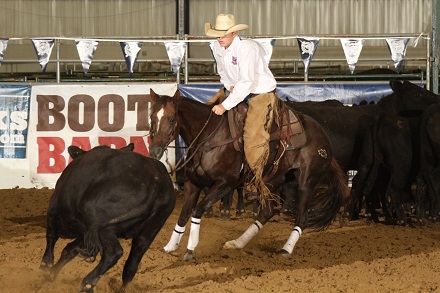
White: Well, you’d think so, but honestly, there are so many people and so many campers and so much livestock that there are only about six facilities in the U.S. big enough to hold them. Oh, and not one of them is in the state of Texas.
SDM: Not even one?
White: No, a lot of the rodeo grounds there were built when the cities were just getting established and now they’re landlocked and can’t expand. We use the facilities in Des Moines, Iowa; Lebanon, Tennessee; Huron, South Dakota; two facilities in Wyoming and one in Perry, Georgia. It’s not just the incredible amount of space it takes up; it’s the incredible amount of power for all those hookups.
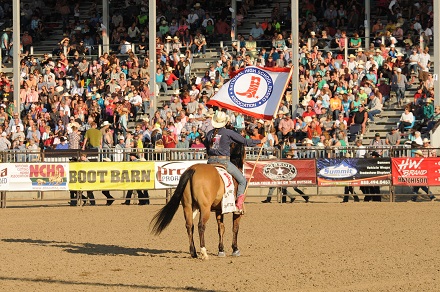 We can build an arena just about anywhere if all we wanted to do was host a rodeo, but it takes special facilities for an event this size. There are a number of other activities we host along with it, too: a big volleyball tournament that all the states participate in, a field day with things like three-legged races, a golf tournament – plus we do a lot of skill clinics. The PRCA will send people who will teach team roping, barrel racing and more. A lot of the professional athletes will come donate their time and it makes it really special for the kids who participate in this.
We can build an arena just about anywhere if all we wanted to do was host a rodeo, but it takes special facilities for an event this size. There are a number of other activities we host along with it, too: a big volleyball tournament that all the states participate in, a field day with things like three-legged races, a golf tournament – plus we do a lot of skill clinics. The PRCA will send people who will teach team roping, barrel racing and more. A lot of the professional athletes will come donate their time and it makes it really special for the kids who participate in this.
SDM: Is there a big push to go on to a pro career among these kids?
White: I think a lot of kids dream about being in the PRCA but the reality is that only a small percentage will go on to become professional rodeo athletes. And even at the pinnacle of our sport, you’ll never make the kind of money the NBA players make. So whereas the PRCA does give out prize money, we give out scholarships. We want our members to continue with their education. We’re not sanctioned the way a school football team would be; rodeo is more of a club activity, but we still require them to turn in their grades to us. And we really do have some great kids. Every year, we hear about them; we’ve seen some go on to Harvard, and in fact, we just got a letter from one who was accepted to Wharton 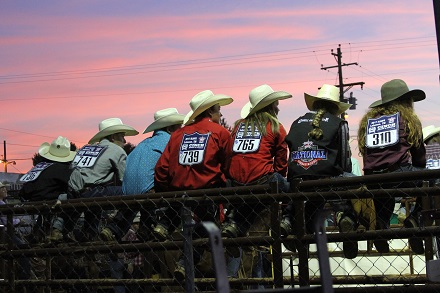 School of Business. Another thing that is so great is that a lot of them come from middle America – they may have grown up on farms or ranches and they have a lot of discipline already. It’s a lot of work to take care of a horse, and it’s a lot of responsibility to work on a farm. These are kids that say ‘Yes, sir’ and you’ll see the boys take off their hats and stand up when they’re being introduced to a lady. It’s just really good to see.
School of Business. Another thing that is so great is that a lot of them come from middle America – they may have grown up on farms or ranches and they have a lot of discipline already. It’s a lot of work to take care of a horse, and it’s a lot of responsibility to work on a farm. These are kids that say ‘Yes, sir’ and you’ll see the boys take off their hats and stand up when they’re being introduced to a lady. It’s just really good to see.
SDM: What are the demographics like in terms of participation? Is it mostly male?
White: No, not at all. We run 56 percent female, 44 percent male. We have an equal number of events for boys and girls, but girls tend to grow up with a love of equine and horse ownership skews female, so girls are more often involved in horse activities like barrel racing and so on. The boys will be involved in saddle bronc or bull riding – but they have horse activities too.
SDM: Are there states where rodeo is growing faster than others?
White: New York State and New Jersey are our fastest-growing states. New Jersey and Maryland are our newest states in terms of rodeo. Before that, the fastest-growing state was North Carolina, which I attribute to the rodeo leadership there.
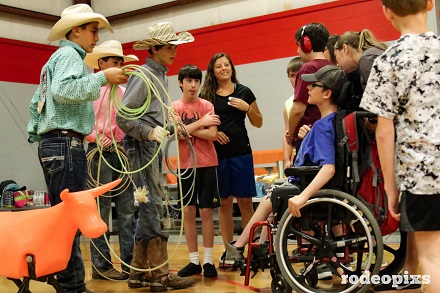 SDM: Rodeo has a lot of traditions. Have there been any changes to it?
SDM: Rodeo has a lot of traditions. Have there been any changes to it?
White: Yes -- every year, families get further and further removed from agriculture as a whole. It used to be that everyone was involved in agriculture and had been involved in rodeo, but we’re starting to see more and more first-generation rodeo families. It presents some fun challenges. Whereas some families have been in rodeo for years, the new families are coming in and there’s a definite disconnect. They don’t know as many people, they don’t know all the slang – they really want to catch up. We now have directors in place who are starting to cater to those families more.
SDM: Understanding that there are only a few places that can host national events, what does it take to host an event at the state or regional level?
White: If you picked out a state – Maryland, for example, high school rodeo could take place in a typical riding arena – a good, safe arena with good footing and places to park campers and horse trailers. I equate it to a big high school football game – you wouldn’t be drawing a big public crowd; you’d mainly have the contestants and their families.
SDM: What specifically do you look for when you’re planning a high school rodeo?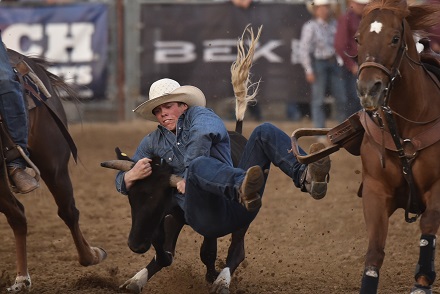
White: A lot of things. We stress safety; we really do, so for example, a bull that a professional athlete might ride is not necessarily appropriate for a high school athlete. You have to pick the stock appropriate to whatever your state or region might be, taking into consideration the age of your contestants. Because we pay attention to things like that, we run a .07% injury rate. We require that organizations have good insurance if we’re going to sanction their event. Typically, it’s harder for them to get insurance if they don’t go with the national company we encourage, but sometimes they want to work with a local company because it’s a local rodeo. Those companies are often surprised to find out how low our injury rate is and it’s because we take so many precautions.
SDM: Is that the biggest misconception about rodeo?
White: Well, definitely there’s not as much injury as you might think but the really glaring misconception is that we mistreat the animals. If you spend any time with these contestants and their families and their stock, you’ll see it’s quite the opposite. In fact, if you go to visit any of the big stock contractors out west, you’ll see they have whole cemeteries with headstones for their bucking stock. They absolutely love those animals and they’re not going to do anything that endangers them.
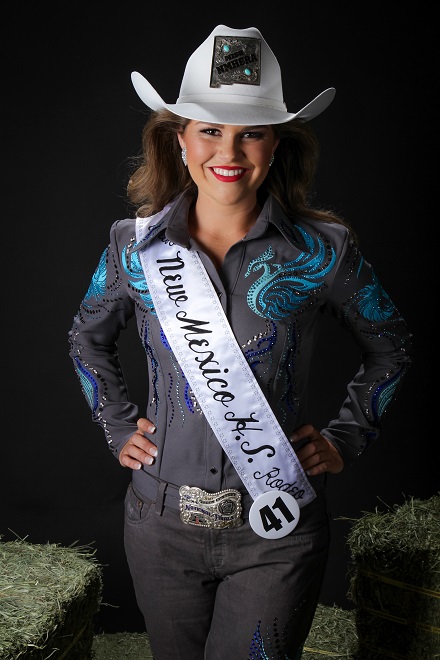 If you ever go to those farms, you can walk right up to the bulls, for example, and feed them carrots and they’ll be gentle and friendly. In fact, we encourage people to go to the pens in the rodeo and visit with those animals so they can see how happy they are. But I like to say they’re like any other athlete; once they get in the chute, the adrenaline starts going and they start bucking. People take such good care of their animals, not just their horses but their bulls and everything else. Still, that idea that there’s cruelty, I’d say it’s something that will never go away. We just keep trying to put our message out there and let people know our story: we love these animals.
If you ever go to those farms, you can walk right up to the bulls, for example, and feed them carrots and they’ll be gentle and friendly. In fact, we encourage people to go to the pens in the rodeo and visit with those animals so they can see how happy they are. But I like to say they’re like any other athlete; once they get in the chute, the adrenaline starts going and they start bucking. People take such good care of their animals, not just their horses but their bulls and everything else. Still, that idea that there’s cruelty, I’d say it’s something that will never go away. We just keep trying to put our message out there and let people know our story: we love these animals.
SDM: A little while back, you talked about rodeo being more of a club sport. Although equestrian is an emerging sport for women at the collegiate level, it’s not yet a full NCAA championship sport. Do you see rodeo ever making it as a collegiate sport, or as a varsity sport on the high school level? Obviously, NHSRA participants are the ones who go on to the National Intercollegiate Rodeo Associaton.
White: We’re pretty much the sole feeder of kids to college rodeo, so we definitely see them moving on that way. But in terms of other growth, there’s some pretty interesting things happening in our market. PBR, the Professional Bull Riders that everyone knows, was bought by WME-IMG, which is a huge operation – they own UFC, for example. And they have deep pockets with the right connections, so it will be interesting to watch what they can do for the sport.

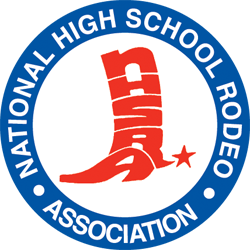 www.nhsra.com
www.nhsra.com